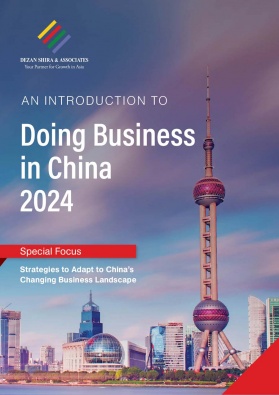China Removes All Safeguard Duties on New Zealand’s Dairy Products
Starting January 1, 2024, New Zealand’s dairy products gained duty-free access to China, marking the culmination of strategic tariff removal outlined in the China-New Zealand Free Trade Agreement. This development provides new opportunities for New Zealand businesses and investors involved in the dairy sector, while also solidifying the role of China as New Zealand’s largest trading partner.
New Zealand announced that all its dairy products have gained duty-free access to the Chinese market as of January 1, 2024. This includes the removal of safeguard duties, especially those on milk powder, signifying the culmination of a deliberate step-by-step process in eliminating tariffs outlined in the China-New Zealand Free Trade Agreement (FTA). This decision represents not just the conclusion of a gradual tariff elimination journey but highlights the commitment of both countries to fostering open trade.
In this article, we delve into the historical context, assess the economic implications, and examine the specific impact of the recent tariff removal on New Zealand’s dairy industry and its trade relations with China.
Background
For over a decade, New Zealand’s dairy exporters faced the challenge of Chinese tariffs, in place since the 2008 FTA with China. These tariffs, initially set at 10 percent, were triggered when pre-agreed volumes of dairy imports from New Zealand exceeded specified thresholds.
The rationale behind these tariffs was to protect Chinese farmers from potential surges in dairy imports that the Chinese government anticipated following reductions in out-of-quota tariffs on dairy products.
Initially, the New Zealand dairy industry, operating below the 100,000-tonne trigger threshold, found the safeguards acceptable. However, the landscape changed with the 2009 melamine scandal, shaking confidence in locally produced dairy and leading to increased demand for imported alternatives. As incomes rose, so did the demand for New Zealand’s dairy products, triggering the safeguard thresholds earlier each year.
The growth in dairy imports led to substantial tariff payments. Estimates reveal that the safeguards resulted in approximately US$200 million in tariffs paid to the Chinese government based on US$2 billion sales of skimmed and whole milk powders to China in the first nine months of 2023 alone.
Recognizing the impact on their dairy industry and eager to enhance trade relations, former Prime Ministers John Key and Jacinda Ardern made the early removal of these safeguards a top priority during negotiations to upgrade the FTA with China. However, despite New Zealand’s arguments that the measures were outdated, costly for Chinese consumers, and hindered trade, Chinese leaders were initially cautious.
The safeguards, applying to liquid milk, butter, and cheese until the end of 2022, and milk powders until the end of 2023, were allowed to expire as originally negotiated.
Now, the removal of tariffs, particularly those on milk powders, marks a significant development in the trade dynamics between the two nations, aligning with New Zealand’s goal of achieving completely free trade in dairy products with China.
China-New Zealand FTA
New Zealand was the first developed country to sign an FTA with China. Initiated in 2008 and subsequently revised in 2022, the China-New Zealand FTA underwent amendments “to align it with the latest trade policies, and business practices in areas of e-commerce, government procurement, environment, trade, and competition.”
Over time, this comprehensive agreement has been instrumental in eliminating tariffs on over 99 percent of goods exported from New Zealand to China and reciprocally for Chinese goods entering New Zealand.
Beyond the tariff landscape, the FTA extends its impact by offering robust dispute resolution mechanisms, streamlining administrative procedures for bilateral trade, and enhancing market access for both nations. The continuous evolution of this agreement reflects a commitment to adapting to contemporary trade dynamics, ensuring its relevance in a changing global economic landscape.
In addition to the China-New Zealand FTA, the ongoing trade collaboration between the two countries is built upon the foundation established by an even larger agreement, the Regional Comprehensive Economic Partnership (RCEP). Signed by 15 Asia-Pacific countries, including China and New Zealand, the RCEP is the largest FTA when measured by combined GDP, population, and total export value. It aims to facilitate trade and investment by reducing tariffs and establishing common trade rules. As noted by the China FTA Network, the upgraded China-New Zealand FTA protocol takes into account the framework provided by the RCEP. In other words, there is a substantial overlap between the scope of the two agreements when it comes to bilateral trade relations between the two countries.
Entering into force in January 2022, RCEP is projected to increase New Zealand’s GDP by approximately US$2.0 billion. Notably, under RCEP, New Zealand services exporters and investors have, for the first time, benefited from market access commitments from both China and ASEAN countries that are not part of the Comprehensive Progressive Agreement for the Tran-Pacific Partnership (CPTPP).
Economic impact
The removal of tariffs positions New Zealand favorably, as it now enjoys unrestricted free trade with China in dairy products. Aligning with earlier projections, this development is estimated to bring an additional US$350 million in revenue as the FTA takes full effect.
This significant policy shift directly reverberates across New Zealand’s entire dairy industry. The elimination of tariffs means that all dairy products can now enter the Chinese market duty-free. This newfound accessibility is expected to drive an uptick in export volumes, creating fresh avenues for revenue generation.
After all, the tangible impact of this strategic move is already evident after the expiration of safeguard measures on December 31, 2023. Price increases in the Global Dairy Trade auction have been noted, propelled by an upswing in demand from China. This surge in demand is not merely a byproduct of tariff removal but is further amplified by proactive measures undertaken by the Chinese government to stimulate its economy through increased spending.
On the other hand, considering the dairy industry’s status as a critical component of New Zealand’s economy, its performance holds substantial weight in shaping the country’s overall economic outlook. The removal of tariffs is poised to translate into a positive impact on the dairy payout – the income farmers receive for their products. This, in turn, is expected to cultivate heightened morale among farmers, contributing to an optimistic outlook for the industry’s future.
China-New Zealand trade relationship
China stands as New Zealand’s largest trading partner, leading in both imports and exports of goods. Figures from China’s Ministry of Commerce (MOFCOM) indicate that bilateral trade in 2022 approached US$25.2, reflecting a 1.8 percent upswing from the preceding year.
Within this robust trade relationship, Chinese exports to New Zealand saw a substantial increase, totaling US$9.2 billion, marking a noteworthy 7.4 percent year-on-year growth.
Meanwhile, imports from New Zealand to China reached almost US$16 billion, exhibiting a marginal decrease of 1.1 percent year-on-year.
New Zealand’s dairy exports to China
In 2022, New Zealand’s dairy exports to China totaled NZ$7.2 billion (US$4.4 billion), marking a marginal decline of 5 percent compared to the previous year, primarily attributed to pandemic-related lockdowns. However, the subsequent six months until June 2023 witnessed a remarkable rebound, with export values surging by almost 10 percent year-on-year.
This resurgence, indicative of the sector’s resilience, was made possible by targeted recovery efforts, a clear policy vision, and the easing of COVID-related restrictions.
In 2023, China proactively increased its stockpile of dairy products in anticipation of consumer demand. This strategy, coupled with a dedicated effort by the Chinese government to promote dairy consumption through health and science education initiatives, played a crucial role in sustaining and strengthening the demand for dairy products.
The case of infant formula
New Zealand’s export earnings from infant formula demonstrated notable resilience and growth potential. In the year ending December 2022, the country’s revenue from infant formula exports alone amounted to NZ$1.44 billion. This growth continued into the first half of 2023, witnessing a 59 percent surge, fueled by both higher export volumes and enhanced product value.
Additionally, the shockwaves in the global infant formula market, triggered by Abbott Laboratories’ plant closures in the US, created an opportunity for New Zealand manufacturers to showcase their commitment to quality, health, and hygiene, thereby filling a gap in the market.
Despite the impressive growth, the infant formula market in China faces challenges, including a declining birth rate and tightened government regulations. Stricter registration requirements, introduced in February 2023, necessitate re-registration for all infant formula manufacturers under more stringent conditions.
That said, the reputation of New Zealand manufacturers for quality positions them favorably. They are encouraged to capitalize on this opportunity to further expand the China market for their products.
Conclusion
New Zealand’s newfound duty-free access to its dairy products in the Chinese market signifies more than a mere policy shift. The recent removal of tariffs, especially on milk powders, culminates years of negotiation efforts combined with a cautious and gradual approach, and it serves as a tangible symbol of the shared commitment between the two countries to promote unrestricted trade.
In the course of dismantling these safeguard duties, both nations have underscored their dedication to building a trade environment that is conducive to growth and mutual benefit, further solidifying their economic collaboration.
About Us
China Briefing is written and produced by Dezan Shira & Associates. The practice assists foreign investors into China and has done so since 1992 through offices in Beijing, Tianjin, Dalian, Qingdao, Shanghai, Hangzhou, Ningbo, Suzhou, Guangzhou, Dongguan, Zhongshan, Shenzhen, and Hong Kong. Please contact the firm for assistance in China at china@dezshira.com.
Dezan Shira & Associates also has offices in Vietnam, Indonesia, Singapore, United States, Germany, Italy, India, and Dubai (UAE). We also have partner firms assisting foreign investors in The Philippines, Malaysia, Thailand, Bangladesh.
- Previous Article China to Grant Ireland Unilateral Visa-Free Treatment, Deepening Bilateral Ties
- Next Article Settori cinesi da tenere sott’occhio nel 2024









